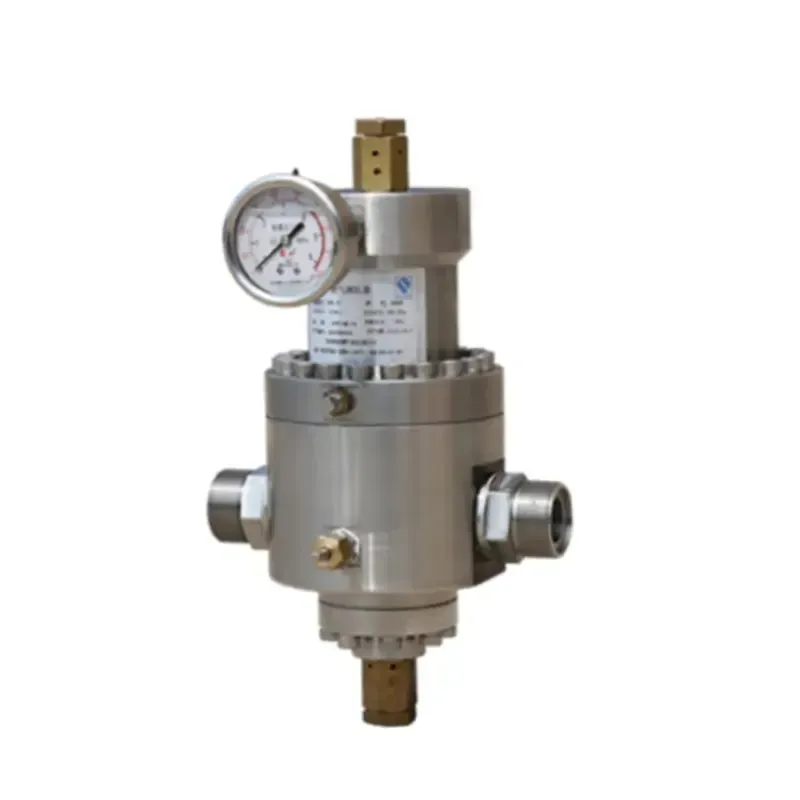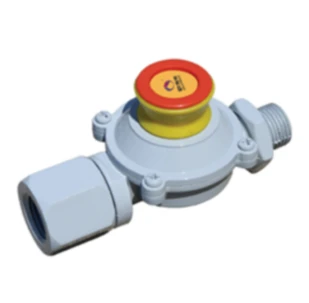
Jun . 05, 2025 06:50
Back to list
Gas Pressure Regulator Valve - High Precision & Durable
Here's what you can expect from this comprehensive guide:
- The critical performance metrics defining modern gas pressure regulators
- Breakthrough engineering improvements in regulator technology
- Detailed comparison of top manufacturers and their technical specifications
- Customization options for specialized industrial requirements
- Real-world deployment scenarios demonstrating ROI
- Operational cost analysis across different solutions
- Implementation strategies for upgrading existing systems

(صمام منظم ضغط الغاز)
Gas Pressure Regulators in Industrial Energy Systems
Modern manufacturing facilities consume approximately 7.8 trillion cubic feet of natural gas annually for process heating alone. Reliable pressure control stands as the fundamental safeguard against devastating incidents like pressure-induced pipeline ruptures - a leading cause of the 190 significant gas distribution incidents reported annually. Regulators operate continuously across pressure ranges from 0.5 to 10,000 psig, handling flow rates exceeding 1.2 million SCFH in power generation applications.
Performance Gaps in Conventional Pressure Management
Traditional spring-loaded regulators demonstrate accuracy deviations up to ±15% during cyclical demand shifts. Uncontrolled pressure fluctuations account for 68% of thermal process variability in glass manufacturing and cause 12% yield losses in petrochemical crackers. When pressure differentials exceed design parameters, safety relief systems activate with discharge costs averaging $11,000 per incident. Field studies show that poor pressure control increases maintenance frequencies by 22% in compressor stations and causes 32% more unscheduled downtime than modern alternatives.
Technological Evolution in Modern Regulators
Leading manufacturers now embed self-diagnostic sensors monitoring seat wear, temperature compensation, and flow characteristics - transmitting real-time data through Hart Protocol or Modbus interfaces. The latest control algorithms maintain ±0.25% accuracy under load swings, while balanced-piston designs eliminate lock-up issues during low-flow conditions. Corrosion-resistant internals using Hastelloy C276 extend service intervals beyond 60,000 operational hours in sour gas applications. Dual-seal stem packing virtually eliminates fugitive emissions, consistently achieving below 500 ppm methane leakage rates during rigorous EPA Method 21 testing.
Manufacturer Comparison Table
| Manufacturer | Maximum Working Pressure (psig) | Accuracy | Temperature Range | Sealing Technology | Expected Lifespan |
|---|---|---|---|---|---|
| RegulatorPro XT | 5,800 | ±0.35% | -60°F to 680°F | Double O-ring | 10 years |
| FlowTek N-Series | 3,450 | ±1.0% | 0°F to 450°F | PTFE composite | 7 years |
| GasMaster Ultra | 7,500 | ±0.25% | -80°F to 850°F | Metal bellows | 15 years |
| PressureDyne V7 | 2,200 | ±0.75% | -20°F to 600°F | Spring-energized | 8 years |
Tailored Solutions for Industry-Specific Demands
Petrochemical processing applications require specialized alloys resisting hydrogen embrittlement at 800 psi H2 service. These custom-configured installations integrate pressure transmitters with automated shutoff valves to execute safety instrumented functions within 300 milliseconds. Semiconductor fabrication utilizes ultra-high purity regulators featuring 32 Ra µin surface finishes with zero internal crevices. LNG transfer systems demand cryogenic designs maintaining precise control at -260°F, utilizing stem extensions exceeding 48 inches to isolate moving components from cold zones. Food processing specifications mandate FDA-compliant seals capable of withstanding daily sanitization cycles without performance degradation.
Operational Results From Deployment Projects
Following a refinery-wide upgrade to integrated regulator systems, TotalEnergies reduced purge gas consumption by 37% at their Antwerp facility - achieving $2.6M annual savings. A pharmaceutical manufacturer eliminated batch inconsistencies by implementing multi-stage regulator arrays, increasing API purity yields by 1.8%. Pipeline operators have documented 92% decrease in relief valve activations after retrofitting compressor stations with pilot-operated regulators featuring failsafe positioning. Field data shows that precision gas regulation reduced heat treat furnace temperature deviations by 80% at aerospace forging plants, increasing fatigue life consistency in turbine components.
Optimizing Industrial Systems with Advanced Gas Pressure Regulators
Modern regulator designs directly impact operational expenditures through multiple channels: reducing safety system interventions by 70%, extending maintenance cycles beyond quarterly inspections, and decreasing energy losses through stable combustion control. The latest pilot-operated variants maintain ±1 psi accuracy despite 20:1 turndown ratios - crucial for flexible manufacturing cells with dynamic load profiles. Leading engineering firms recommend integrating smart regulators into predictive maintenance programs to capture secondary benefits like flow verification without separate metering. Third-party validation studies confirm most facilities achieve ROI within 13 months after upgrading legacy pressure management systems.

(صمام منظم ضغط الغاز)
FAQS on صمام منظم ضغط الغاز
Q: What is a Gas Pressure Regulator?
A: A Gas Pressure Regulator, also known as منظم ضغط الغاز, is a control device that reduces high gas pressure from a supply source to a safe, consistent level for appliances. It ensures operational safety in systems like natural gas lines. Its design prevents over-pressurization to avoid hazards.
Q: How does a Natural Gas Pressure Regulator function?
A: A Natural Gas Pressure Regulator (منظم ضغط الغاز الطبيعي) uses a diaphragm and spring mechanism to adjust gas flow, maintaining stable output pressure despite input fluctuations. It responds automatically to changes, enhancing efficiency in applications like home heating. This prevents damage to connected equipment.
Q: What are common types of Gas Regulators?
A: Key types include direct-acting regulators for general use, pilot-operated versions for high-flow scenarios, and specialized Natural Gas Pressure Regulators for residential systems. Each type, like the صمام منظم ضغط الغاز, is selected based on flow rate and pressure requirements to ensure reliable performance.
Q: Why is regular maintenance important for a Gas Regulator?
A: Regular maintenance of a منظم ضغط الغاز prevents issues like leaks or pressure drops, which can cause safety risks. Inspections involve checking the diaphragm for wear and cleaning vents to ensure consistent operation. Neglect can lead to system failures in gas networks.
Q: What are troubleshooting steps for a faulty Gas Pressure Regulator?
A: Start with a soap test for leaks and inspect the vent for blockages. If pressure is erratic, check the diaphragm or spring, as seen in صمام منظم ضغط الغاز units, and replace parts if damaged. Professional help is advised for complex faults in natural gas systems.
Latest news
-
What Role Do Pressure Reducers Play in Industrial Systems?NewsJun.12,2025
-
What Role Do Gas Valves Play in Industrial Safety and Functionality?NewsJun.12,2025
-
Key Components in Energy Management and Temperature ControlNewsJun.12,2025
-
Integral Components in Mechanical and Energy SystemsNewsJun.12,2025
-
How Do Industrial Valves and Filters Ensure System Safety and Efficiency?NewsJun.12,2025
-
Essential Components for Industrial Fluid Management: Valves and SystemsNewsJun.12,2025

